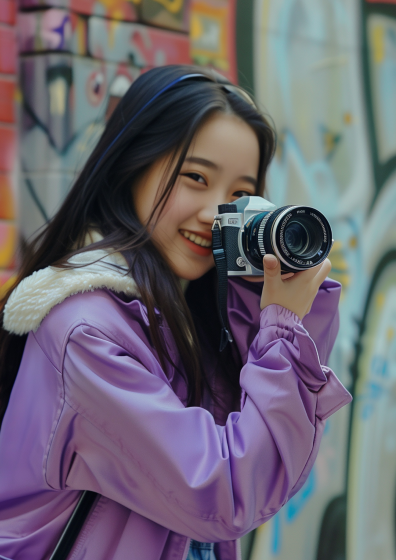
In the digital world of today, photography is about presenting your work professionally as much as it is about capturing lovely photographs. Whether you’re a hobbyist or a seasoned professional, creating a photography website is crucial for building your brand, attracting customers, and publicly showcasing your work. But what exactly is a photography site, and why is it vital?
Let’s break it down:
1. Knowing a Photography Location
A photography site is a website specifically created for photographers to showcase their work. It can include photo galleries, services, pricing, contact forms, client testimonials, and even a blog. This all-in-one platform acts as your digital business card, online portfolio, and marketing hub.
Potential customers can browse your work, understand your style, and contact you for inquiries or bookings. It’s more than just a collection of pictures—it’s your personal brand, brought to life.
2. Important Components of a Good Photography Website
A good photography website should enhance your brand while providing a seamless browsing experience. Essential elements include:
- Gallery/Portfolio Page: The main attraction. Organized by event type—weddings, portraits, landscapes, etc.—so visitors can easily explore your best work.
- About Section: Introduce yourself, your creative journey, and what makes your photography unique.
- Services & Pricing: Clearly outline your packages, services, and price ranges.
- Contact Form or Booking System: Make it easy for visitors to get in touch or book a session.
- Testimonials: Build trust with new visitors through real client reviews.
- Responsive Design: Your site must look and function perfectly on mobile and desktop.
SEO Optimization: Helps your site rank on search engines and appear to potential clients looking for local photographers.
Why Do You Need a Photography Website?
You may be wondering, “Can’t I just use Instagram or Facebook?” While those are great for exposure, they don’t replace the power of a professional photography website. Here’s why:
- Ownership: You control your site, unlike social media, which is influenced by algorithms and platform changes.
- Professionalism: A branded site shows that you’re serious about your craft and makes a lasting impression.
- Better SEO: A well-optimized site appears in Google searches for local photographers, helping clients find you.
All-in-One Hub: Provide detailed services, booking tools, FAQs, and a curated portfolio—creating a streamlined client experience.
Types of Photography Sites
Depending on your niche and goals, there are different kinds of photography websites:
- Portfolio Sites: Simple and elegant designs focused purely on image presentation.
- Client Galleries: Password-protected areas where clients can view or download their photos.
- E-commerce Photography Sites: Sell stock images, prints, or presets directly from your site.
- Blog Photography Sites: Perfect for visual storytelling, tutorials, and behind-the-scenes content.
Hybrid Sites: Combine galleries, bookings, blogs, and e-commerce
Best Photography Websites to Build On
You don’t need to be a developer to build a stunning photography site. Here are some platforms that are perfect for creating a photography website:
- Squarespace: Known for beautiful, modern templates ideal for image-heavy sites.
- Wix: User-friendly and great for beginners with lots of creative freedom.
- SmugMug: Built specifically for photographers, with e-commerce and client delivery features.
- Zenfolio: Offers proofing, client management, and an integrated store.
WordPress: Highly customizable with powerful plugins and themes for photographers.
How to Make Your Photography Website Stand Out
Want to rise above the noise? Here are some key tips to make one of the best Website photography websites:
- Showcase Your Best Work: Curate a strong selection instead of uploading everything.
- Tell Your Story: Use compelling text to accompany your images—your journey, philosophy, or process.
- Keep a Consistent Aesthetic: Your website design should reflect your personal brand—through fonts, colors, and layout.
- Add CTAs (Calls to Action): Encourage users to contact you, book a session, or view your portfolio.
Keep It Updated: Regularly add new galleries, blog posts, or testimonials.
Monetizing Your Photography Website
Your website isn’t just a showcase—it can be a revenue-generating platform. Here’s how:
- Sell Prints or Digital Downloads: Create a shop section for fine art sales.
- Offer Presets or Tutorials: Sell Lightroom presets or courses for aspiring photographers.
- Enable Online Booking: Accept payments and schedule sessions directly from your site.
Use Affiliate Marketing: Recommend gear or software you use and earn commissions.
Final Thoughts
A photography website is more than an online album—it’s your digital headquarters. Whether you shoot weddings, nature, portraits, or fashion, a website boosts your visibility, professionalism, and credibility. It helps you attract the right audience and gives your passion a powerful platform to grow.
So, if you’re ready to elevate your photography game, investing in one of the best photography websites is a smart first step. Whether you’re a beginner or seasoned pro, create a photography website that reflects your vision and builds your future. Get Connect with Snaap Sites for all your best photography websites.

